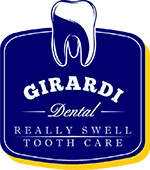What Situations Make Tooth Extractions Essential?
Let’s face it—nobody looks forward to getting a tooth pulled. But sometimes, tooth extractions are the best thing you can do for your smile, especially when the tooth is causing pain, crowding, or infection. Whether it’s due to trauma, decay, or wisdom teeth, understanding the need for extractions helps you make informed choices about your oral health.
If you’re considering tooth extractions in St. Catharines, ON, the caring professionals at Girardi Dental are ready to guide you every step of the way. Let’s explore the scenarios where extractions become a must, and how the process really works.
When Is a Tooth Extraction Necessary?
Sometimes a filling, crown, or root canal just won’t cut it. These are the common situations where removing the tooth becomes essential:
1. Severe Tooth Decay
Decay that goes deep into the tooth can damage the pulp and surrounding bone. If the infection is too extensive, a root canal may not save it.
- Extreme sensitivity or constant pain
- Swollen gums or pus discharge
- A visible cavity or darkening tooth
If left without treatment, the infection can spread to neighboring teeth or the jawbone.
2. Advanced Gum Disease
Also known as periodontitis, this condition weakens the structures holding your teeth in place.
- Loose or shifting teeth
- Receding gums
- Bad breath that won’t go away
In some cases, removing the tooth can stop further bone loss and support better gum healing.
3. Overcrowding or Orthodontic Prep
Orthodontists often recommend extractions to create space for teeth alignment.
- If your teeth are overlapping or growing sideways
- You’re getting braces or aligners
One or more extractions may give the remaining teeth room to move into their ideal spots.
4. Impacted Wisdom Teeth
These back molars often don’t erupt properly and may get trapped in the gums or jawbone.
- Pain at the back of the mouth
- Swelling or difficulty opening the jaw
- Recurring infections
Extracting wisdom teeth can prevent damage to adjacent teeth and relieve discomfort.
5. Fractured or Broken Teeth
If a tooth is cracked below the gumline or split vertically, it’s not usually restorable.
- Severe trauma (accident, fall)
- Biting down on too hard foods like ice or candy
- Teeth grinding (bruxism)
In these cases, removing the damaged tooth and replacing it with an implant or bridge may be your best bet.
What to Expect: The Tooth Extraction Procedure
Once your dentist confirms extraction is necessary, here’s how it typically goes down:
Step-by-Step Breakdown
- X-ray Evaluation
Your dentist takes a full image of the tooth and jaw to assess the best extraction method.
- Local Anesthesia
You won’t feel a thing during the procedure. The area is completely numbed.
- Simple or Surgical Extraction
- Simple: Used for visible teeth that are easy to remove.
- Surgical: Needed when the tooth is broken off, impacted, or beneath the gumline.
- Stitches (if needed)
Some surgical extractions may require stitches to help the site heal faster.
- Post-Op Gauze and Instructions
Gauze is placed to stop bleeding, and you’re given a list of aftercare steps to follow at home.
What About Aftercare?
Healing typically takes 7 to 10 days. Here’s how you can make the recovery smooth and prevent complications.
Post-Extraction Do’s:
- Rest and avoid strenuous activity
- Use ice packs for swelling
- Stick to soft foods: soup, yogurt, mashed potatoes
- Take prescribed pain medication or over-the-counter options as directed
- Keep your head elevated while sleeping
Post-Extraction Don’ts:
- Don’t drink through a straw (it can dislodge the clot)
- Don’t smoke or consume alcohol for 24–48 hours
- Don’t poke the site with your tongue or fingers
How to Replace a Missing Tooth After Extraction
If the removed tooth isn’t a wisdom tooth, your dentist may recommend replacement. Why? Because a lost tooth can cause other teeth to shift, affecting your bite and smile.
Popular Tooth Replacement Options:
- Dental Implants
- Long-lasting and natural-looking, ideal for a single missing tooth.
- Dental Bridges
- Great for replacing one or more teeth in a row using surrounding teeth for support.
- Partial Dentures
- A more affordable option if multiple teeth are missing.
When to Call the Dentist
Here are signs that you need to contact your dentist in St Catharines right away after an extraction:
- Bleeding that doesn’t stop after several hours
- Swelling that gets worse after 48 hours
- Pus, foul odor, or signs of infection
- Fever or chills
- Difficulty swallowing or breathing
These could signal a dry socket or infection, both of which need immediate care.
How to Prevent Future Tooth Extractions
To avoid needing extractions in the future, it’s important to build habits that promote oral health.
Top Tips for Prevention:
- Brush twice daily with fluoride toothpaste
- Floss at least once a day
- Use a mouthguard if you grind your teeth
- Schedule regular dental checkups and cleanings
- Address cavities and gum issues early
Final Thoughts
Tooth extractions might sound intimidating, but they’re often a step toward a healthier mouth. Whether it’s decay, damage, or crowding, knowing when extraction is needed can save you from more serious issues down the road.
At Girardi Dental, your comfort and care come first. From consultation to recovery, we’re here to help you understand your options and support your smile every step of the way.

